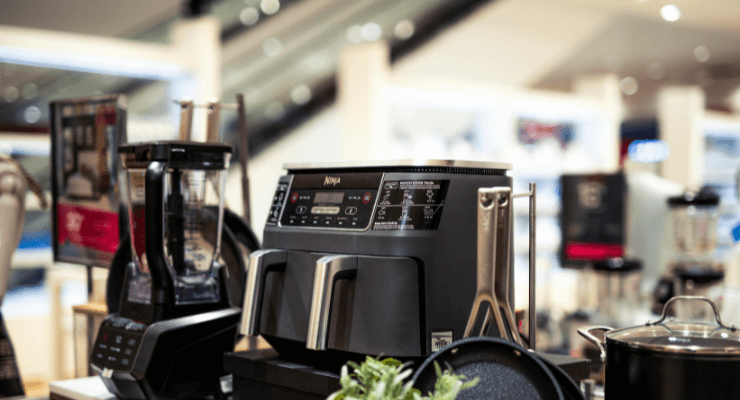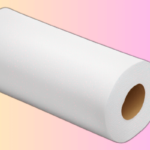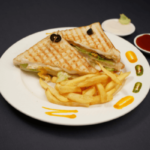If you’ve ever tasted freshly made nut butter, you know the difference between store-bought and homemade varieties. Not only can you customize the flavor, but you also control the ingredients, ensuring it’s free of preservatives, additives, or unnecessary oils. However, making nut butter at home requires the right tools, and not all food processors can handle the challenge.

Nut butter, especially when made from harder nuts like almonds, can put a lot of strain on your kitchen appliance. That’s why choosing the best food processor is essential for a smooth and consistent outcome. In this guide, we’ll walk you through the key factors to consider when shopping for a food processor that can effortlessly make delicious nut butter at home.
What to Look for in a Food Processor for Nut Butter
Not all food processors are created equal, especially when it comes to making nut butter. Key features to consider include:
1. Power and Motor Strength
One of the key factors in making smooth nut butter is motor strength. Since nuts are dense, they require a processor with enough power to grind them down into a creamy consistency without overheating. A motor with at least 700 watts is recommended for nut butter. Anything lower might struggle, overheat, or even shut down in the middle of processing.
2. Bowl Size
The size of the food processor’s bowl matters, especially if you plan to make large batches of nut butter. A small bowl will make the process time-consuming, as you’ll need to work in smaller batches. Opt for a processor with a bowl capacity of at least 10 to 14 cups, especially if you regularly make nut butter in bulk or for larger households. This ensures that you can process the nuts efficiently without overflowing the bowl.
3. Blades
The blade design is crucial for turning nuts into smooth butter. Look for a food processor with sharp, durable, and strong stainless steel blades that are designed to chop through tough ingredients like almonds, peanuts, and cashews. Dull or weak blades may leave you with chunky nut butter or uneven results.
4. Durability and Build Quality
Given the intense task of grinding nuts, a food processor needs to be built to last. Sturdy, well-constructed models with a solid base are best to ensure they can handle the vibration and stress caused by processing nuts for long periods. A food processor with a plastic base might move or shake more, whereas a metal or reinforced base will remain stable during operation.
5. Ease of Cleaning
Nut butter can be sticky and messy, making the cleanup process a challenge if your food processor isn’t easy to disassemble or clean. Look for models with dishwasher-safe parts or components that can be quickly cleaned by hand. Having removable blades and bowls makes the process simpler and helps avoid buildup of residue over time.
Top 5 Food Processors for Nut Butter
Cuisinart Food Processor, DFP-14BCNY
The Cuisinart 14-Cup Food Processor (DFP-14BCNY) is a highly efficient kitchen appliance designed for versatile food preparation. With a spacious 14-cup capacity and a powerful 720-watt motor, it effortlessly handles large batches and tough ingredients. Equipped with stainless steel blades, including slicing, shredding, and chopping options, this food processor allows for easy mincing, dicing, shredding, pureeing, and dough kneading.
Its user-friendly controls and extra-large feed tube simplify operation and reduce prep time, while all food-contact parts are BPA-free for safety. Cleanup is quick and easy with dishwasher-safe components. Additionally, the processor comes with a 5-year motor warranty, making it a reliable choice for any kitchen.
Pros
Cons
Hamilton Beach Food Processor (70730)
The Hamilton Beach Food Processor & Vegetable Chopper (70730) is a versatile kitchen tool designed to simplify food preparation. With a 10-cup capacity, it is perfect for handling moderate batches, making it ideal for family meals and meal prep. This food processor features a powerful 450-watt motor that efficiently slices, shreds, minces, and purees a variety of ingredients. It includes a built-in bowl scraper that saves time by allowing you to process ingredients without stopping to use a spatula.
The Hamilton Beach food processor offers precise control with two speed settings and a pulse option, giving you the flexibility to achieve the desired texture for your recipes. Its compact design with suction cup feet ensures stability during use, while the BPA-free and dishwasher-safe parts make cleanup effortless. This user-friendly food processor is an excellent addition to any kitchen, providing reliable performance and convenience for all your food preparation needs.
Pros
Cons
Ninja Food Processor, Professional Plus, BN601
The Ninja Food Processor Professional Plus (BN601) is a powerful kitchen appliance designed to streamline food preparation. With a robust 1000-peak-watt motor, it effortlessly handles tough ingredients, ensuring smooth and consistent results. This food processor features a spacious 9-cup processor bowl, making it ideal for larger batches, perfect for family meals or meal prepping.
Equipped with three versatile blades, the Ninja Food Processor offers four functions: chopping, slicing, pureeing, and dough mixing, allowing you to tackle a wide variety of culinary tasks with ease. The user-friendly design includes a food chute and pusher, which simplifies the process of adding ingredients while in use. Cleanup is also hassle-free, as the removable parts are dishwasher-safe.
With its combination of power, versatility, and convenience, the Ninja Food Processor Professional Plus is an essential tool for any home chef looking to enhance their cooking experience.
Pros
Cons
Nutribullet Triple Prep System NBKS50100, Black
The Nutribullet Triple Prep System (NBKS50100) is an innovative kitchen appliance designed to simplify food preparation and enhance your cooking experience. Featuring a compact design, this versatile system includes three distinct containers—each perfect for various food prep tasks, from chopping vegetables to blending smoothies. The powerful motor ensures efficient processing, delivering consistent results for all your culinary creations.
This prep system comes with easy-to-use controls, allowing you to effortlessly switch between functions for chopping, blending, and pureeing. The BPA-free plastic containers are durable and designed for easy cleanup, as they are dishwasher-safe. Additionally, the system’s sleek black finish adds a modern touch to your kitchen decor. With the Nutrbullet Triple Prep System, you can streamline your meal prep and enjoy delicious, healthy meals with minimal effort.
Pros
Cons
KitchenAid KFC3516ER 3.5 Cup Food Chopper, Empire Red
The KitchenAid KFC3516ER 3.5 Cup Food Chopper is a compact and stylish kitchen appliance designed for efficient food preparation. With its vibrant empire red finish, this food chopper adds a pop of color to your countertop while offering practical functionality. The 3.5-cup capacity is perfect for small to medium-sized batches, making it ideal for chopping, mincing, and pureeing various ingredients.
Equipped with a powerful motor, this food chopper ensures quick and consistent results, allowing you to prepare everything from salsas to dressings with ease. The simple one-touch operation makes it user-friendly, and the stainless steel blade guarantees precise chopping and mixing. Cleanup is hassle-free, as the removable parts are dishwasher-safe. Compact and easy to store, the KitchenAid 3.5 Cup Food Chopper is a reliable addition to any kitchen, helping you save time and effort in your culinary endeavors.
Pros
Cons
Why Make Your Own Nut Butter?
Homemade nut butter is more than just a trendy kitchen project — it offers several advantages over store-bought options. Here’s why you should consider making your own:
1. Health Benefits
Store-bought nut butters often contain added sugars, unhealthy oils, and preservatives that extend their shelf life. By making your own at home, you can control exactly what goes into your nut butter. Whether it’s almonds, peanuts, or cashews, you know you’re getting pure, unadulterated ingredients. Additionally, you can adjust the amount of salt, omit sugars entirely, or add natural sweeteners like honey or maple syrup for a healthier, tastier spread.
2. Customization
One of the best parts of homemade nut butter is the ability to customize it to your liking. Whether you prefer your butter chunky or smooth, lightly salted or unsalted, the choice is entirely yours. You can even get creative and add flavors like cinnamon, vanilla, or cocoa powder for a unique twist.
3. Cost Efficiency
Nuts can be pricey, but making your own nut butter can still save you money in the long run. A jar of high-quality nut butter in stores is often marked up due to processing, packaging, and distribution costs. When you make it at home, you’re only paying for the nuts themselves, making it a cost-effective option over time.
Tips for Making the Perfect Nut Butter at Home
Making nut butter can be a simple and rewarding process, but here are some tips to ensure you get the best results:
1. Roast Your Nuts
Roasting your nuts before blending is a game-changer. It enhances the flavor and makes the nuts easier to grind into a butter-like consistency. Simply spread your nuts in a single layer on a baking sheet and roast them in the oven at around 350°F (175°C) for 10-15 minutes, stirring halfway through. This releases the oils inside the nuts, making them smoother and creamier when processed.
2. Add Oil Sparingly
While some nuts, like peanuts, are naturally oily and don’t require extra oil, others, like almonds, may benefit from a little help. If your nut butter is too thick or isn’t blending smoothly, add a teaspoon of neutral oil, such as coconut or avocado oil. This will help achieve a creamier texture without overpowering the natural flavor of the nuts. But be careful not to add too much oil — a little goes a long way!
3. Be Patient
Making nut butter takes time, so don’t rush the process. Let your food processor work in intervals, giving it a break to avoid overheating. The nuts will first turn into a fine meal, then a thick paste, and finally, after several minutes, into smooth nut butter. If the mixture seems stuck or too dry, scraping down the sides and adding a bit more oil will help the process along. Patience will reward you with a smooth, creamy result.
Conclusion
Making your own nut butter at home can be a rewarding and cost-effective way to enjoy a healthy, customizable spread. With the right food processor, you’ll achieve creamy, delicious results every time. By considering factors like motor power, bowl size, and ease of cleaning, you can ensure that your processor can handle the job efficiently.
Now that you know what to look for in a food processor, it’s time to start making your own nut butter and experimenting with different flavors and textures. Let us know in the comments how your homemade nut butter turns out!
FAQ:
While you can technically use a high-powered blender to make nut butter, a food processor is generally better suited for the job. Blenders are designed for liquids and may struggle with the thick consistency of nuts. They often overheat, and it can be more challenging to scrape the butter out of a blender jar. A food processor is easier to control, with the proper settings for grinding nuts evenly.
When stored properly in an airtight container in the refrigerator, homemade nut butter can last anywhere from 2 to 3 weeks. Since there are no preservatives in homemade versions, they have a shorter shelf life than store-bought. If you notice any changes in smell, taste, or texture, it’s time to make a fresh batch.
Adding oil isn’t always necessary, especially if you’re using naturally oily nuts like peanuts or macadamia nuts. However, harder or drier nuts, such as almonds, may require a small amount of oil to achieve a smooth, spreadable consistency. Start with a teaspoon at a time until the butter reaches your desired texture.
As an Amazon Associate, I earn from qualifying purchases.



